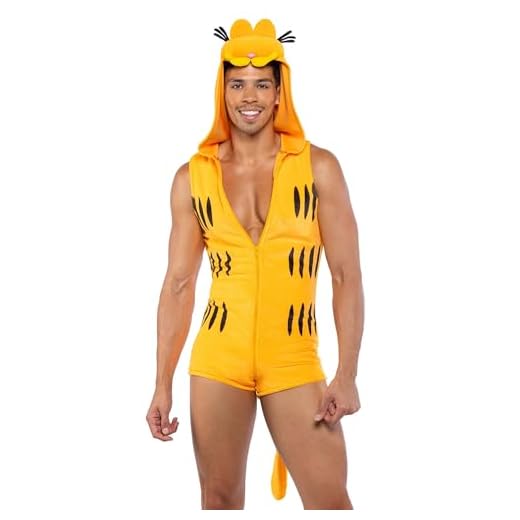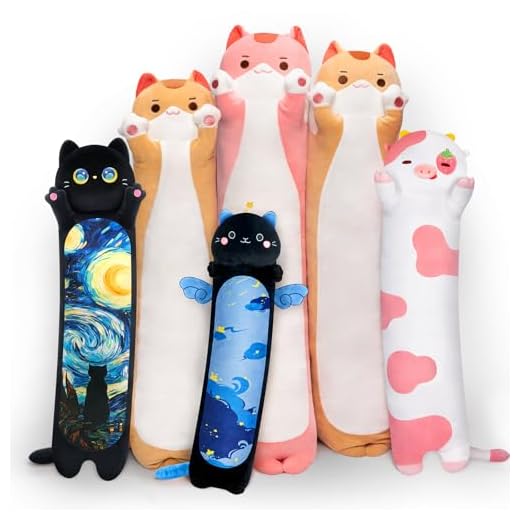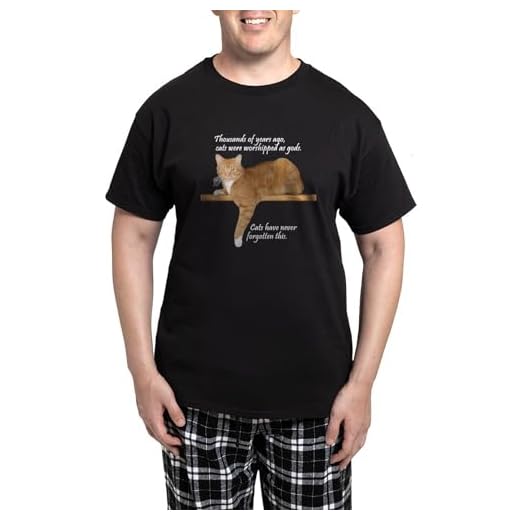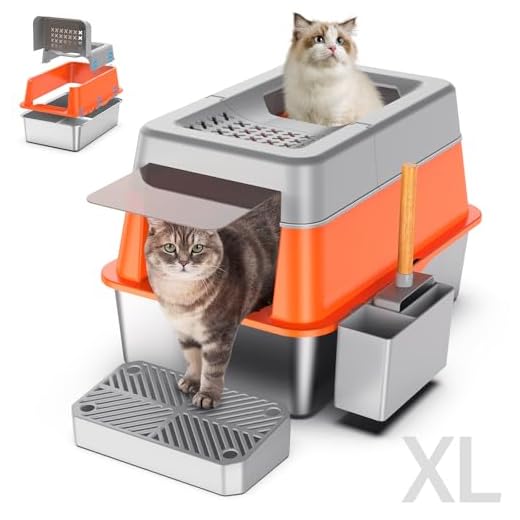



When you spot a ginger furball, chances are high that it’s a boy. Genetic research reveals that the orange coat color is linked to the X chromosome. Males possess one X chromosome, while females carry two. This genetic trait means that it’s statistically more probable for ginger fur to grace the male population.
Interestingly, about 80% of orange furred companions are male. This disproportion results from the way the color gene is inherited. The specific gene responsible for this striking hue is a variation on the X chromosome, making it easier for males to express it, given their genetic makeup.
So if you’re drawn to that fiery coat, remember that your chances of encountering a male feline are significantly higher. Understanding this genetic background not only satisfies curiosity but also enriches the bond you share with your furry friend.
Genetic Insights on Feline Coloration
Did you know that the hue of a feline’s coat is closely linked to its sex? The gene responsible for the bright fur is located on the X chromosome. Males have one X chromosome while females possess two. This genetic setup means that a male can quickly express the orange trait, while a female needs two copies of the gene to show the same coloration. Hence, fewer females display this striking shade.
In my observations, the presence of this unique gene directly impacts the population ratios. Statistically, the likelihood of a tom exhibiting this vivid tint is significantly higher. Around 80% of all felines with this coloration are boys. This imbalance is simply a reflection of how genetics operates when it comes to fur color.
When I meet other felines in the neighborhood, it’s fascinating to notice that the majority of my bright-colored friends are indeed boys. This trend is consistent across various breeds and environments. It’s a fun fact that adds to the personality of these lively boys!
The Genetics Behind Orange Coat Color
Understanding the genetics influencing the coat color of felines can be quite fascinating. The primary gene determining the hue of the fur is the O gene, located on the X chromosome. This gene is responsible for producing a pigment called pheomelanin, which results in the warm, reddish tones associated with many feline fur patterns.
Genetic Inheritance Patterns
Male individuals possess one X chromosome and one Y chromosome (XY), while females have two X chromosomes (XX). If a male inherits an X chromosome carrying the O gene, he will express that color. However, for females, both X chromosomes must carry the O gene for them to display the same hue. This is why a larger proportion of male specimens exhibit this particular coloration.
| Genotype | Phenotype |
|---|---|
| O (Orange) | Male: Orange |
| O/O (Orange/Orange) | Female: Orange |
| o (Non-orange) | Male: Non-orange |
| O/o (Orange/Non-orange) | Female: Non-orange |
Impact of Genetics on Color Patterns
In addition to the O gene, multiple other genes interact with it, affecting the intensity and pattern of the coat. For example, the tabby pattern often appears alongside the orange hue due to the Agouti gene. This gene decides whether the fur will have a solid color or a pattern like stripes or spots. Such genetic interactions create a broad spectrum of coat designs, but the foundational orange color remains rooted in the O gene’s influence.
Understanding the Male-Bias in Ginger Feline Population
Statistically, the ratio of ginger tabbies skews towards the male population. This phenomenon can be attributed to genetic factors. Specifically, the X chromosome carries the gene responsible for the distinctive coloration. Males possess one X chromosome (XY), while females have two (XX). This genetic structure means that for a male to exhibit that striking hue, only one copy of the gene is necessary. In contrast, females require two copies, making the likelihood of female ginger individuals significantly lower.
To grasp the implications of this genetic trait, consider the following:
- Approximately 80% of ginger tabbies are male.
- The ratio indicates that for every female with this coat, there are four males.
- This genetic predisposition can lead to a perceived abundance of male ginger felines in households and shelters.
In addition to genetics, environmental factors also influence population dynamics. Breeding practices and preferences may lead to a higher frequency of male offspring being retained. This can further contribute to the observed male dominance among ginger individuals.
Awareness of this genetic and environmental interplay is crucial for potential pet owners. Choosing a ginger feline may more likely result in welcoming a male into the family. Thus, understanding this bias aids in responsible adoption and breeding practices.
Identifying Traits of Male Orange Felines
Spotting a male with a bright coat isn’t just about color. Look for a broader head shape; this often signifies a male’s presence. Additionally, males tend to have larger and more muscular bodies compared to their female counterparts. These physical characteristics can help differentiate them at a glance.
Behavioral Indicators
Behavior can also reveal gender. Males may display more territorial tendencies, often marking their space or engaging in play that appears more aggressive. They are typically more sociable, frequently seeking out interaction, while females might exhibit more reserved behavior.
Common Health Traits
Health issues can sometimes vary by gender. Males may be prone to certain conditions such as urinary blockages due to their anatomy. Regular vet check-ups focusing on these areas are wise. Keeping an eye on their weight is crucial, as males often have a tendency to gain more weight than females, impacting their overall health.
Implications for Cat Owners and Breeders
For those considering bringing a new feline companion into their home or breeding, understanding the traits associated with these ginger boys is key. Their playful nature often leads to a more energetic household. Be prepared for lots of interaction and playtime. Ensure you have plenty of toys and activities to keep them engaged.
Health Considerations
Regular veterinary check-ups remain crucial. Some genetic predispositions may affect specific health aspects. Discuss with your vet about any potential concerns related to coat color and male characteristics. Nutritional balance is equally essential; inquire about suitable diets that cater to their energetic lifestyle. For instance, you might wonder can cats eat cheeto puffs? It’s always best to consult with a professional before introducing any new snacks.
Breeding Practices
For breeders, focusing on responsible practices is paramount. Understanding genetic lines can improve the quality and health of future litters. Avoid inbreeding, which can lead to health issues. Prioritize socialization from a young age to ensure these lively companions are well-adjusted and friendly.
FAQ:
Why are most orange cats male?
The phenomenon of orange cats being predominantly male is linked to the genetics of coat color in felines. The gene responsible for the orange coloration is located on the X chromosome. Male cats have one X and one Y chromosome (XY), while female cats have two X chromosomes (XX). If a male inherits the orange gene on his single X chromosome, he will be orange. In contrast, a female cat would need to inherit the orange gene on both X chromosomes to express the orange color, which is less common. This genetic pattern explains the higher ratio of male orange cats compared to females.
Are there any exceptions to the rule that orange cats are mostly male?
Yes, there are exceptions to the trend of orange cats being predominantly male. While it is true that a larger percentage of orange cats are male due to the genetic factors discussed, female orange cats do exist. These females can be born when they inherit the orange gene from both parents. Additionally, some orange cats may have mixed coat colors due to their genetic background, which can influence their appearance. So, while the majority of orange cats are male, female orange cats are still a notable part of the population, even if they are less frequent.
When you spot a ginger furball, chances are high that it’s a boy. Genetic research reveals that the orange coat color is linked to the X chromosome. Males possess one X chromosome, while females carry two. This genetic trait means that it’s statistically more probable for ginger fur to grace the male population.
Interestingly, about 80% of orange furred companions are male. This disproportion results from the way the color gene is inherited. The specific gene responsible for this striking hue is a variation on the X chromosome, making it easier for males to express it, given their genetic makeup.
So if you’re drawn to that fiery coat, remember that your chances of encountering a male feline are significantly higher. Understanding this genetic background not only satisfies curiosity but also enriches the bond you share with your furry friend.
Genetic Insights on Feline Coloration
Did you know that the hue of a feline’s coat is closely linked to its sex? The gene responsible for the bright fur is located on the X chromosome. Males have one X chromosome while females possess two. This genetic setup means that a male can quickly express the orange trait, while a female needs two copies of the gene to show the same coloration. Hence, fewer females display this striking shade.
In my observations, the presence of this unique gene directly impacts the population ratios. Statistically, the likelihood of a tom exhibiting this vivid tint is significantly higher. Around 80% of all felines with this coloration are boys. This imbalance is simply a reflection of how genetics operates when it comes to fur color.
When I meet other felines in the neighborhood, it’s fascinating to notice that the majority of my bright-colored friends are indeed boys. This trend is consistent across various breeds and environments. It’s a fun fact that adds to the personality of these lively boys!
The Genetics Behind Orange Coat Color
Understanding the genetics influencing the coat color of felines can be quite fascinating. The primary gene determining the hue of the fur is the O gene, located on the X chromosome. This gene is responsible for producing a pigment called pheomelanin, which results in the warm, reddish tones associated with many feline fur patterns.
Genetic Inheritance Patterns
Male individuals possess one X chromosome and one Y chromosome (XY), while females have two X chromosomes (XX). If a male inherits an X chromosome carrying the O gene, he will express that color. However, for females, both X chromosomes must carry the O gene for them to display the same hue. This is why a larger proportion of male specimens exhibit this particular coloration.
| Genotype | Phenotype |
|---|---|
| O (Orange) | Male: Orange |
| O/O (Orange/Orange) | Female: Orange |
| o (Non-orange) | Male: Non-orange |
| O/o (Orange/Non-orange) | Female: Non-orange |
Impact of Genetics on Color Patterns
In addition to the O gene, multiple other genes interact with it, affecting the intensity and pattern of the coat. For example, the tabby pattern often appears alongside the orange hue due to the Agouti gene. This gene decides whether the fur will have a solid color or a pattern like stripes or spots. Such genetic interactions create a broad spectrum of coat designs, but the foundational orange color remains rooted in the O gene’s influence.
Understanding the Male-Bias in Ginger Feline Population
Statistically, the ratio of ginger tabbies skews towards the male population. This phenomenon can be attributed to genetic factors. Specifically, the X chromosome carries the gene responsible for the distinctive coloration. Males possess one X chromosome (XY), while females have two (XX). This genetic structure means that for a male to exhibit that striking hue, only one copy of the gene is necessary. In contrast, females require two copies, making the likelihood of female ginger individuals significantly lower.
To grasp the implications of this genetic trait, consider the following:
- Approximately 80% of ginger tabbies are male.
- The ratio indicates that for every female with this coat, there are four males.
- This genetic predisposition can lead to a perceived abundance of male ginger felines in households and shelters.
In addition to genetics, environmental factors also influence population dynamics. Breeding practices and preferences may lead to a higher frequency of male offspring being retained. This can further contribute to the observed male dominance among ginger individuals.
Awareness of this genetic and environmental interplay is crucial for potential pet owners. Choosing a ginger feline may more likely result in welcoming a male into the family. Thus, understanding this bias aids in responsible adoption and breeding practices.
Identifying Traits of Male Orange Felines
Spotting a male with a bright coat isn’t just about color. Look for a broader head shape; this often signifies a male’s presence. Additionally, males tend to have larger and more muscular bodies compared to their female counterparts. These physical characteristics can help differentiate them at a glance.
Behavioral Indicators
Behavior can also reveal gender. Males may display more territorial tendencies, often marking their space or engaging in play that appears more aggressive. They are typically more sociable, frequently seeking out interaction, while females might exhibit more reserved behavior.
Common Health Traits
Health issues can sometimes vary by gender. Males may be prone to certain conditions such as urinary blockages due to their anatomy. Regular vet check-ups focusing on these areas are wise. Keeping an eye on their weight is crucial, as males often have a tendency to gain more weight than females, impacting their overall health.
Implications for Cat Owners and Breeders
For those considering bringing a new feline companion into their home or breeding, understanding the traits associated with these ginger boys is key. Their playful nature often leads to a more energetic household. Be prepared for lots of interaction and playtime. Ensure you have plenty of toys and activities to keep them engaged.
Health Considerations
Regular veterinary check-ups remain crucial. Some genetic predispositions may affect specific health aspects. Discuss with your vet about any potential concerns related to coat color and male characteristics. Nutritional balance is equally essential; inquire about suitable diets that cater to their energetic lifestyle. For instance, you might wonder can cats eat cheeto puffs? It’s always best to consult with a professional before introducing any new snacks.
Breeding Practices
For breeders, focusing on responsible practices is paramount. Understanding genetic lines can improve the quality and health of future litters. Avoid inbreeding, which can lead to health issues. Prioritize socialization from a young age to ensure these lively companions are well-adjusted and friendly.
FAQ:
Why are most orange cats male?
The phenomenon of orange cats being predominantly male is linked to the genetics of coat color in felines. The gene responsible for the orange coloration is located on the X chromosome. Male cats have one X and one Y chromosome (XY), while female cats have two X chromosomes (XX). If a male inherits the orange gene on his single X chromosome, he will be orange. In contrast, a female cat would need to inherit the orange gene on both X chromosomes to express the orange color, which is less common. This genetic pattern explains the higher ratio of male orange cats compared to females.
Are there any exceptions to the rule that orange cats are mostly male?
Yes, there are exceptions to the trend of orange cats being predominantly male. While it is true that a larger percentage of orange cats are male due to the genetic factors discussed, female orange cats do exist. These females can be born when they inherit the orange gene from both parents. Additionally, some orange cats may have mixed coat colors due to their genetic background, which can influence their appearance. So, while the majority of orange cats are male, female orange cats are still a notable part of the population, even if they are less frequent.
When you spot a ginger furball, chances are high that it’s a boy. Genetic research reveals that the orange coat color is linked to the X chromosome. Males possess one X chromosome, while females carry two. This genetic trait means that it’s statistically more probable for ginger fur to grace the male population.
Interestingly, about 80% of orange furred companions are male. This disproportion results from the way the color gene is inherited. The specific gene responsible for this striking hue is a variation on the X chromosome, making it easier for males to express it, given their genetic makeup.
So if you’re drawn to that fiery coat, remember that your chances of encountering a male feline are significantly higher. Understanding this genetic background not only satisfies curiosity but also enriches the bond you share with your furry friend.
Genetic Insights on Feline Coloration
Did you know that the hue of a feline’s coat is closely linked to its sex? The gene responsible for the bright fur is located on the X chromosome. Males have one X chromosome while females possess two. This genetic setup means that a male can quickly express the orange trait, while a female needs two copies of the gene to show the same coloration. Hence, fewer females display this striking shade.
In my observations, the presence of this unique gene directly impacts the population ratios. Statistically, the likelihood of a tom exhibiting this vivid tint is significantly higher. Around 80% of all felines with this coloration are boys. This imbalance is simply a reflection of how genetics operates when it comes to fur color.
When I meet other felines in the neighborhood, it’s fascinating to notice that the majority of my bright-colored friends are indeed boys. This trend is consistent across various breeds and environments. It’s a fun fact that adds to the personality of these lively boys!
The Genetics Behind Orange Coat Color
Understanding the genetics influencing the coat color of felines can be quite fascinating. The primary gene determining the hue of the fur is the O gene, located on the X chromosome. This gene is responsible for producing a pigment called pheomelanin, which results in the warm, reddish tones associated with many feline fur patterns.
Genetic Inheritance Patterns
Male individuals possess one X chromosome and one Y chromosome (XY), while females have two X chromosomes (XX). If a male inherits an X chromosome carrying the O gene, he will express that color. However, for females, both X chromosomes must carry the O gene for them to display the same hue. This is why a larger proportion of male specimens exhibit this particular coloration.
| Genotype | Phenotype |
|---|---|
| O (Orange) | Male: Orange |
| O/O (Orange/Orange) | Female: Orange |
| o (Non-orange) | Male: Non-orange |
| O/o (Orange/Non-orange) | Female: Non-orange |
Impact of Genetics on Color Patterns
In addition to the O gene, multiple other genes interact with it, affecting the intensity and pattern of the coat. For example, the tabby pattern often appears alongside the orange hue due to the Agouti gene. This gene decides whether the fur will have a solid color or a pattern like stripes or spots. Such genetic interactions create a broad spectrum of coat designs, but the foundational orange color remains rooted in the O gene’s influence.
Understanding the Male-Bias in Ginger Feline Population
Statistically, the ratio of ginger tabbies skews towards the male population. This phenomenon can be attributed to genetic factors. Specifically, the X chromosome carries the gene responsible for the distinctive coloration. Males possess one X chromosome (XY), while females have two (XX). This genetic structure means that for a male to exhibit that striking hue, only one copy of the gene is necessary. In contrast, females require two copies, making the likelihood of female ginger individuals significantly lower.
To grasp the implications of this genetic trait, consider the following:
- Approximately 80% of ginger tabbies are male.
- The ratio indicates that for every female with this coat, there are four males.
- This genetic predisposition can lead to a perceived abundance of male ginger felines in households and shelters.
In addition to genetics, environmental factors also influence population dynamics. Breeding practices and preferences may lead to a higher frequency of male offspring being retained. This can further contribute to the observed male dominance among ginger individuals.
Awareness of this genetic and environmental interplay is crucial for potential pet owners. Choosing a ginger feline may more likely result in welcoming a male into the family. Thus, understanding this bias aids in responsible adoption and breeding practices.
Identifying Traits of Male Orange Felines
Spotting a male with a bright coat isn’t just about color. Look for a broader head shape; this often signifies a male’s presence. Additionally, males tend to have larger and more muscular bodies compared to their female counterparts. These physical characteristics can help differentiate them at a glance.
Behavioral Indicators
Behavior can also reveal gender. Males may display more territorial tendencies, often marking their space or engaging in play that appears more aggressive. They are typically more sociable, frequently seeking out interaction, while females might exhibit more reserved behavior.
Common Health Traits
Health issues can sometimes vary by gender. Males may be prone to certain conditions such as urinary blockages due to their anatomy. Regular vet check-ups focusing on these areas are wise. Keeping an eye on their weight is crucial, as males often have a tendency to gain more weight than females, impacting their overall health.
Implications for Cat Owners and Breeders
For those considering bringing a new feline companion into their home or breeding, understanding the traits associated with these ginger boys is key. Their playful nature often leads to a more energetic household. Be prepared for lots of interaction and playtime. Ensure you have plenty of toys and activities to keep them engaged.
Health Considerations
Regular veterinary check-ups remain crucial. Some genetic predispositions may affect specific health aspects. Discuss with your vet about any potential concerns related to coat color and male characteristics. Nutritional balance is equally essential; inquire about suitable diets that cater to their energetic lifestyle. For instance, you might wonder can cats eat cheeto puffs? It’s always best to consult with a professional before introducing any new snacks.
Breeding Practices
For breeders, focusing on responsible practices is paramount. Understanding genetic lines can improve the quality and health of future litters. Avoid inbreeding, which can lead to health issues. Prioritize socialization from a young age to ensure these lively companions are well-adjusted and friendly.
FAQ:
Why are most orange cats male?
The phenomenon of orange cats being predominantly male is linked to the genetics of coat color in felines. The gene responsible for the orange coloration is located on the X chromosome. Male cats have one X and one Y chromosome (XY), while female cats have two X chromosomes (XX). If a male inherits the orange gene on his single X chromosome, he will be orange. In contrast, a female cat would need to inherit the orange gene on both X chromosomes to express the orange color, which is less common. This genetic pattern explains the higher ratio of male orange cats compared to females.
Are there any exceptions to the rule that orange cats are mostly male?
Yes, there are exceptions to the trend of orange cats being predominantly male. While it is true that a larger percentage of orange cats are male due to the genetic factors discussed, female orange cats do exist. These females can be born when they inherit the orange gene from both parents. Additionally, some orange cats may have mixed coat colors due to their genetic background, which can influence their appearance. So, while the majority of orange cats are male, female orange cats are still a notable part of the population, even if they are less frequent.












